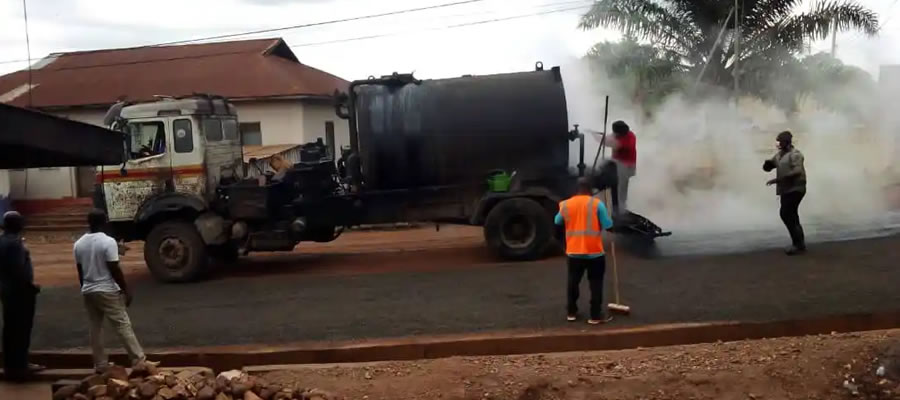

Population Size And Density
According to the 2000 population and Housing Census the district population is 76,702 which gives a density of 8.3 persons per sq. Km. The population density is below the regional density of 25.9 persons per sq Km. The district population growth rate of 3.1% is higher than the national (2.7%) and the regional (2.8%) respectively.
Age And Sex Composition
The sex ratio is 103 males to 100 females. This is due to the fact that females are more mobile and migrate outside the district than their male counterparts. Another factor is that there is enough arable land for the men who are mainly farmers. Urban population decreased from 18% in 1984 to 14.5% in 2000 due mainly to the ethnic conflicts in 1990 and 1996 respectively.
The war between the Gonjas and Nawuris on the one hand and between the Dagombas and Kokombas on the other hand resulted in the devastation of several settlements and the exodus of thousands of people outside the district and region. The population of the district is concentrated in a few accessible areas. The age structure is typical of developing countries with over 50% between 15 - 60 years of age. Age-sex structure also follows the National and Regional Patterns.
Apart from retail trade and services, males dominate in the other occupations. This is because custom and tradition tend to regard these occupations as the preserve of males. Agriculture is the major occupation with over 60% of the labour force. Crops cultivated include maize, sorghum, groundnuts, cassava, yam, beans and soyabeans. Gari processing and sheabutter processing are major commercial activities for the women.
Household Characteristics
Fertility rate which is about (8 children per woman) is high in the district compared with the national average of (4 to 5 children per woman) in normal reproductive life. The average household size is about 8, again larger than the national average of 5 per household. Owing to polygamy and accommodation problems some households have separate cooking and feeding arrangements. The annual average household income is estimated at about ¢550,000.00 which gives an average per capita income of about ¢70,000.00/year. This implies that over 80% of the population fall below the poverty line as set by the UNO to be ¢900,000.00 / year.
In terms of housing, about 60% of the super structure are constructed with mud bricks while over 20% of these buildings are roofed with corrugated iron sheets. The rest are roofed with thatch (grass). Less than 5% of the settlements have electricity. Over 95% of the population relies on fuel wood for energy for both domestic and industrial/commercial purposes.
The poor housing condition is a direct reflection of the low-income levels of the people. The low-income levels are a result of unemployment and low productivity. This situation could be addressed through investment in education and industry to create jobs for the youth. Equitable provision of socio-economic facilities in the rural areas will also reduce the migration of the youth outside the district. This will further increase agricultural production in the district.
Migration
Migration outside the district has very serious consequences on the development of the district i.e loss of productive labour force. By estimates, four (4) out of ten (10) adults in the district stay or live outside the district for 1 year or more.
Out - migration is mainly by the youth, both literates and illiterates. Major factors that account for the out-migration are; (push and pull factors)
- Search for employment and wealth
- Persue further education
- Search for better life in urban centres
- Peer group influence
- Move away from parental control and traditions
The major destinations include down south (Kumasi, Accra, Obuasi etc) and Tamale the regional capital. Most of the young girls migrate to neighbouring Cote de Ivoire for commercial sex. Apart from the loss of productive labour, the out-migration promotes the spread of the HIV/AIDS in the district.
In-migration consists of farmers (60%) in search of farmlands and professionals (10%) who come to work in institutions in the district. About 3% of the in-migrants are tourists who come to the Mole National Park. The rest of the in-migrants are businessmen and women, students and religious people.
Environmental Analysis:
Human economic activities have altered the natural environment. Environmental degradation is reaching alarming stages in some parts of the district such as Damongo, Achubunyor, Kotito no. 2, Daboya areas. In these areas activities such as sand and gravel winning, shifting cultivation, tree cutting for fuel wood and bush burning are threatening the ecological balance of the environment. One adverse effect of these activities is loss of soil nutrients leading to very low productivity, which tend to deepen poverty in the district. (See Environmental check list)
Poor sanitation especially in the large towns is becoming a health hazard. The poor sanitation is due mainly to indiscriminate disposal of solid and liquid waste and lack of proper drainage systems. Traditional Energy Unity of the Savanna Resources Management Project (SRMP) conducted a field study on fuel wood in the district in 2001. The study revealed that an average of 5000 bags (2.5mT) of charcoal is produced monthly for sale in the district. Another 300 mT of firewood is produced commercially per month in the district. One can imagine the tree cover depletion per annum.
Measures such as agro-forestry, tree planting and control of bush fires could help reduce the depletion of the flora and fauna in the district. Presently a few NGOs including ADRA, OIC, the Catholic Church, SRMP and MOFA have commenced implementing some of these remedial measure. The District Assembly has also started campaigns against indiscriminate tree felling and bush fires, sand and gravel winners as well as contractors whose activities destroy the environment are charged by law to plant trees to replace the land they destroy. On sanitation the DA is increasing the provision of KVIP toilets and household toilets in the major settlements. Refuse containers and a tractor have been procure to assist the environmental health unit to manage the sanitation situation in the District.
Date Created : 11/27/2017 1:15:38 AM










 facebook
facebook
 twitter
twitter
 Youtube
Youtube
 +233 593 831 280
+233 593 831 280 0800 430 430
0800 430 430 GPS: GE-231-4383
GPS: GE-231-4383 info@ghanadistricts.com
info@ghanadistricts.com Box GP1044, Accra, Ghana
Box GP1044, Accra, Ghana